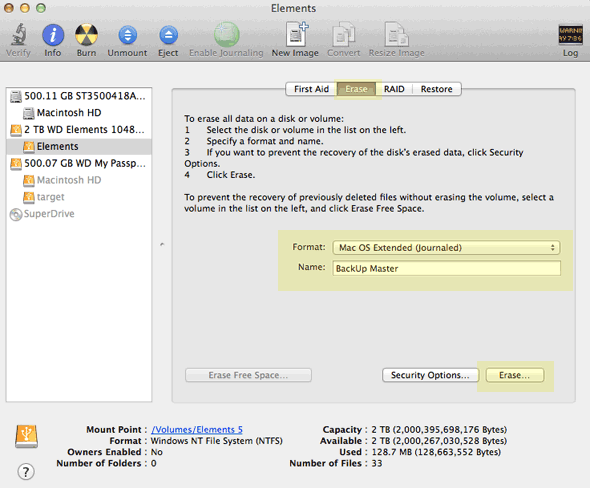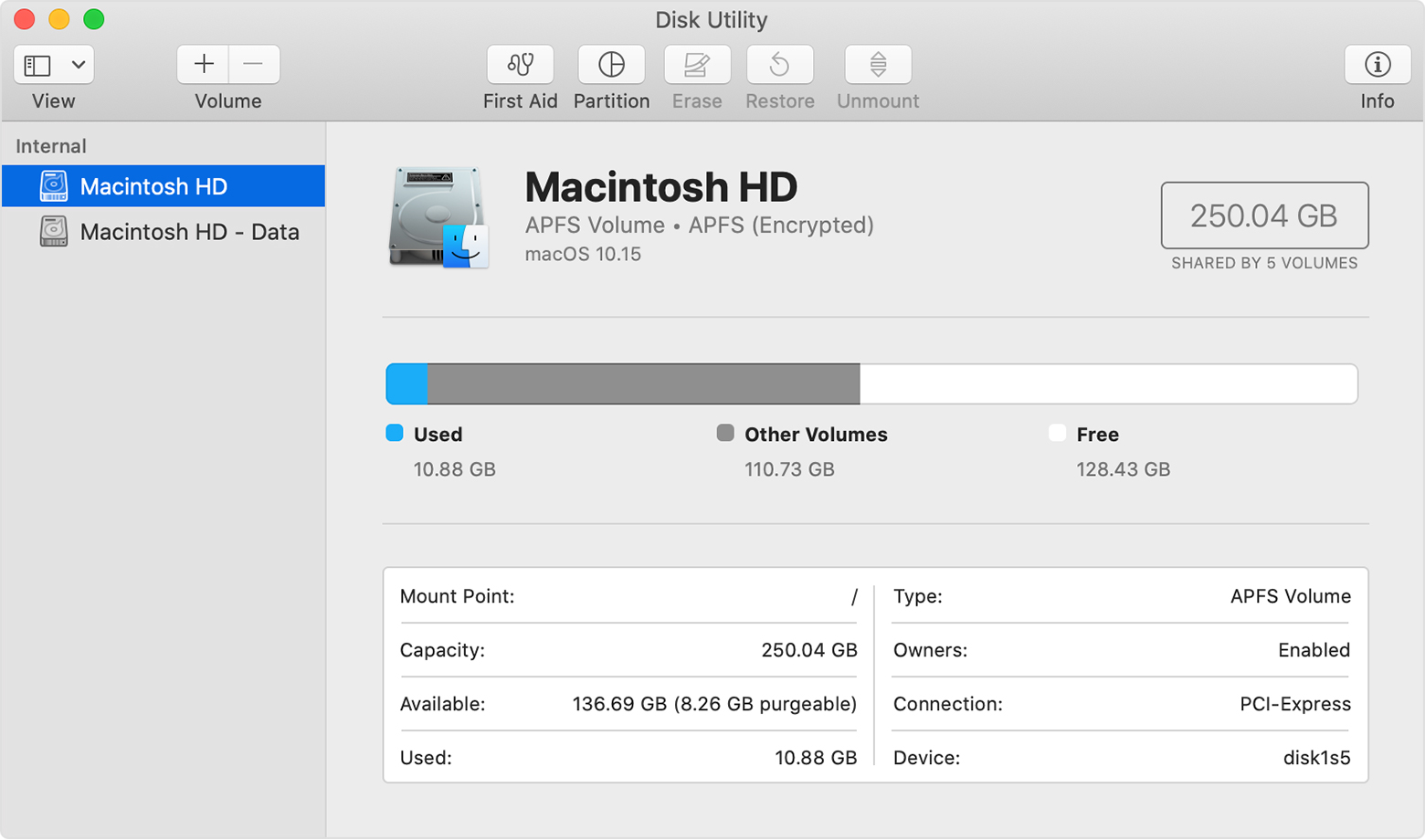

If Disk Utility finds errors that it can't repair, it's now time to erase (format) your disk. This could take a while, so don't be alarmed if it's not over in a couple of minutes Disk Utility will run its checks and try and repair errors for you. So, from the sidebar, select the last volume listed, then click First Aid at the top, and then Run, working your way up the list for each volume, container, and finally, the disk itself.Īs you can see, I've got two volumes, one container, and then the startup disk.
/DiskUtility-589e26793df78c4758e6d0a8.jpg)
Apple recommends repairing volumes first, then containers, and then the startup disks last. Select your startup disk from the sidebar, then click the arrow to view all the containers and volumes. Now, choose Disk Utility from the macOS Utilities window. When you see an Apple logo or spinning globe, release the keys. Restart your Mac, immediately pressing and holding Command (⌘)+R on its startup. Running First Aid from Recovery Mode is necessary for repairing your startup disk.
DISK UTILITY FOR MAC HOW TO
How to run First Aid from Recovery ModeĪlthough Disk Utility checks your startup volume as well, it can't fix any errors if those are found.
DISK UTILITY FOR MAC DOWNLOAD
Or you download the free version now -it's notarized by Apple and completely safe for your Mac. I'll talk you through some of the features later in the article.
DISK UTILITY FOR MAC MAC
Quick Tip: If you suspect your Mac disk is failing, CleanMyMac X has many easy-to-use maintenance tools that can help keep your drive running smoothly. Disk Utility will try to repair what it can and warn you about errors it found that it can't fix.Īlthough this method checks all disks, we can't repair a broken startup disk from here for that, we need to run First Aid from Recovery Mode. Once complete, you'll see a drop-down showing the status click this to explore. In the sidebar, select the disk you're having problems with.Ĭlick on First Aid at the top, and select Run. Open Disk Utility (Finder > Applications > Utilities). You'll quickly be able to identify if any of your disks have issues. It's straightforward to run a check on your Mac with Disk Utility. If you're facing a problem with your startup disk, you'll need to run First Aid from Recovery Mode - we'll cover this in just a moment. After analyzing the disk directory, First Aid will determine if it can repair any detected damage.

It has multiple built-in capabilities that can detect and repair errors. The First Aid function within Disk Utility can quickly check the status of your Mac disk, volumes, and external devices. Some folks really don’t like the thought of poking around in Disk Utility, but it’s simple to use and not a place to fear.

What is the Disk Utility’s First Aid function? Here, we’ll explain how to run First Aid to fix possible problems on your Mac. These kinds of issues indicate there could be a problem with your Mac disk that definitely needs investigating. You can read a lot of detail about macOS drive partitioning, and still find that a volume that meets all the parameters for resizing without erasing, and still be told by Disk Utility that the partition will be erased.If you're experiencing these issues on your Mac, it might be time to run the Disk Utility’s First Aid function and repair your disk:įirst things first, if you're encountering any of the above items, it's time to backup your data before it's too late. I haven’t found a complete consistency in which drives have non-destructive resizable partitions or not. Warning! Click Apply to proceed, and Disk Utility will warn you whether it will be a destructive operation, deleting the partition’s data and re-creating, or not.You can now delete other partitions (select and click the – button), and type in the new size of your main partition in its Size field.Select the disk, not the volume, in the left-hand lists of disks.In the right circumstance, you can simply follow these steps without having to back up the entire drive, erase and reformat it, and add new partitions.Īlways back up your drive before attempting to resize partitions in case something goes wrong, or you accidentally click to proceed on a destructive operation. A Macworld reader resized their main volume to 369GB to set up a Boot Camp partition, but then realized it was too small. Apple made it easier to resize partitions-logical divisions of a disk drive into separate mountable volumes with different properties-several releases of macOS ago.


 0 kommentar(er)
0 kommentar(er)
